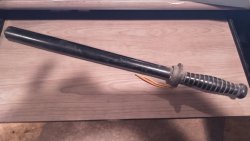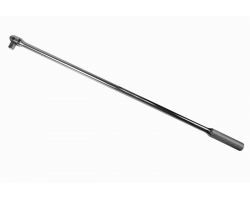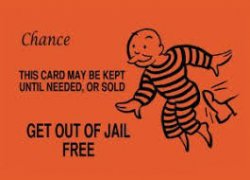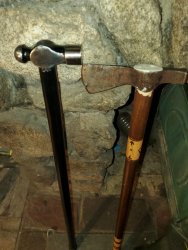Heard this topic discussed recently, and of course everyone is programmed to automatically think they are illegal because of what there cousin or neighbor or uncle told them one time. However when we started looking into it further, the answer (as some of you may expect) is more complicated than a simple yes/no answer.
The highest court in the state has actually ruled that while billy clubs are indeed illegal, collapsible (ASP) batons do not meet the definition. They go on to explain in detail what the term "billy" in the penal law means and they define it in detail.
So now we can see that the highest court has set a precedent of what a "billy" must be. Let's fast forward to see this precedent apply in real life.
So there you have it. A precedent set by the appellate court and then a lower court hearing a similar case years later ruling that they are bound by the high court decision and their strict definition, and therefore dismissing the case. Very interesting indeed.
Discuss....
Citations:
(1) People V Talbert

 www.leagle.com
www.leagle.com
(2) People V Phillips

The highest court in the state has actually ruled that while billy clubs are indeed illegal, collapsible (ASP) batons do not meet the definition. They go on to explain in detail what the term "billy" in the penal law means and they define it in detail.
So for those who do not know, NY describes two types of weapons charges. Those which mere possession of is illegal, and those which are only illegal if they are possessed with intent to use unlawfully against another person. A pocket knife or a fork for example would fit this charge if you used it or threatened someone with it. But otherwise, they are perfectly legal.In our view, based on the manner in which the statute is set forth, the term "billy" must be strictly interpreted to mean a heavy wooden stick with a handle grip which, from its appearance, is designed to be used to strike an individual and not for other lawful purposes. An object which can be used as a billy but which does not fit the strict definition may still be a prohibited weapon under subdivision (2) of section 265.01 of the Penal Law if there exists the requisite intent to use the object unlawfully against another.(1)
So now we can see that the highest court has set a precedent of what a "billy" must be. Let's fast forward to see this precedent apply in real life.
So now we have someone arrested for a collapsable baton in their possession. They did note that if it was possessed with intent to use unlawfully against another it would certainly be illegal (as would a steak knife or a fork), but that is not the case here. Let's see how the court handled it.Count one of the indictment charges defendant under Penal Law §265.02(1) with possession of a billy club. This crime is identical to possession of a "billy" as proscribed in Penal Law §265.01(1), with the additional element of a previous criminal conviction. The term 'billy' is [*2]not defined in the Penal Law. Although it is also possible to charge a person, under Penal Law §265.01(2) with possession of "any deadly instrument or weapon with intent to use the same unlawfully against another," that crime, distinct from strict liability for mere possession of a billy, is not charged here.
The US Customs Officer who first noted the device in defendant's car, and who testified in the grand jury proceeding, described the device as a collapsible baton. He said that it had a cylindrical handle with foam covering, and had two internal collapsible sections, each about 6 to 8 inches long, made of steel tubing which could be extended and locked into place with the flick of a wrist. He described it as a striking weapon, which he had seen demonstrated in his training as a federal law enforcement agent. Some such batons are issued to immigration officers as secondary weapons, Hyde testified. He also said that it is a non-lethal weapon intended to disable someone rather than to inflict injury, though it is capable of misuse in such a way as to be lethal in a blow to the head or neck. Collapsible batons are not included in the list of weapons whose mere possession is prohibited in Penal Law § 265.01(2).
This court finds that the collapsible baton seized from defendant does not fall within the Talbert definition of a billy. From a policy standpoint it might make sense for there to be a prohibition against possession of such a device, though the California court in Mercer heard testimony that the device is also used by practitioners of martial arts. Any such declaration must come either from the state legislature, or from an appellate court by way of judicial interpretation of the statute. This court is bound by the appellate holding in Talbert. Since the device was not a billy, its possession was not unlawful, and the first count must be dismissed.
So there you have it. A precedent set by the appellate court and then a lower court hearing a similar case years later ruling that they are bound by the high court decision and their strict definition, and therefore dismissing the case. Very interesting indeed.
Discuss....
Citations:
(1) People V Talbert

PEOPLE v. TALBERT | 107 A.D.2d 842 (1985) | ad2d8421572 | Leagle.com
On the night of August 14 1982 the car in which defendant was riding was stopped by a State trooper for speeding. The driver and...ad2d8421572
(2) People V Phillips









